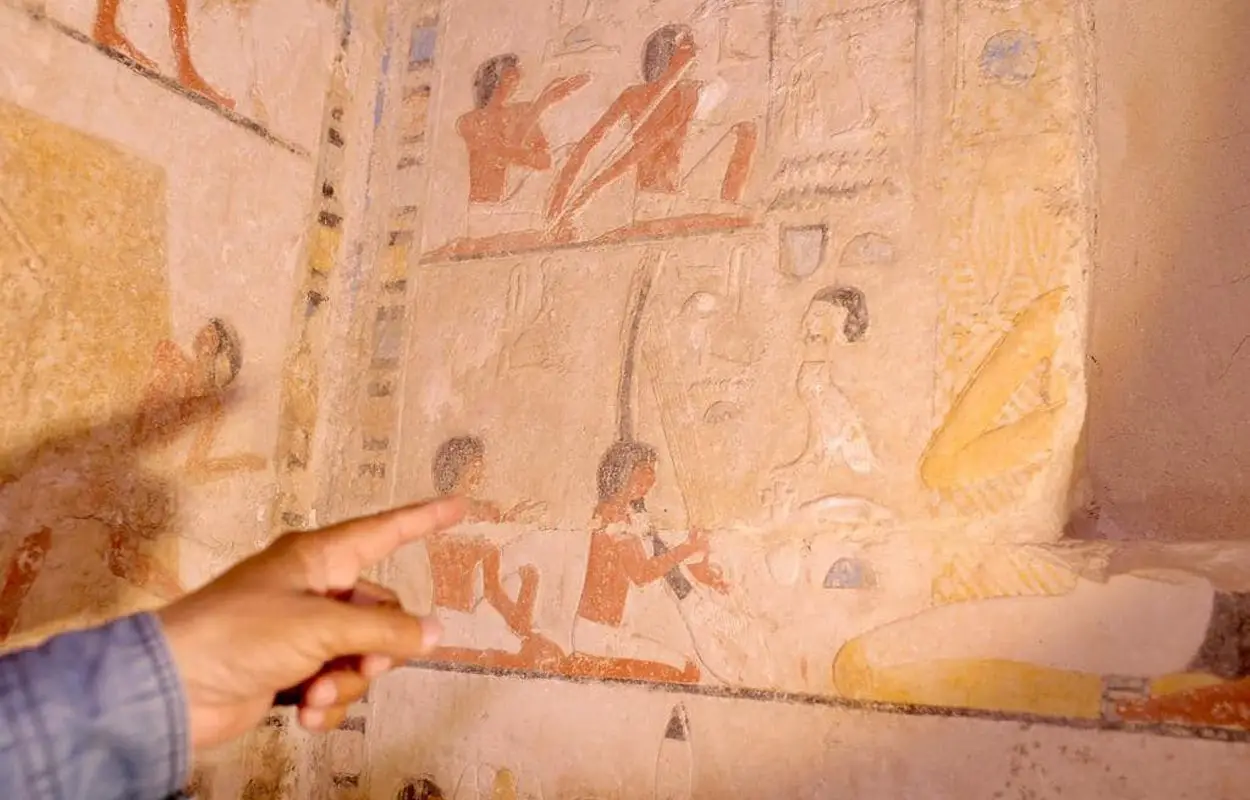In a press conference by the Ministry of Tourism and Antiquities, Ahmed Issa, Minister of Tourism and Antiquities, has announced the discovery of mummification workshops and decorated tombs at Saqqara in the Giza Governorate, Egypt.
Saqqara served as the necropolis for Ancient Egyptian royalty and their extended family during the Old Kingdom period. During the New Kingdom from the 18th Dynasty onward, the necropolis was used by many high-status officials from Memphis.
The mummification workshops have been described as “the largest and most complete”, for which the team found one that was used for embalming people, and the other for animals. Both workshops date from the end of the XXX dynasty (between 380 BC–343 BC) and the beginning of the Ptolemaic era.
The Ancient Egyptians saw the preservation of the body after death as an important step to immortality and living well in the afterlife. Within the Ancient Egyptian concept of the soul, the “ka”, which represented vitality, leaves the body once the person dies. Only if the body is embalmed in a specific fashion will the “ka” return to the deceased body, and rebirth will take place.

To attain eternal life and gain an audience with Osiris, the deceased was mummified in different fashions (depending on cost) to preserve the body. This allowed the soul to reunite with its physical form and find joy in the realm beyond.
The embalming workshop for people is a rectangular building constructed using mudbricks, consisting of several chambers containing beds that measure 2 metres long, by one metre in width. Archaeologists also found a number of ceramics, tools, ritual vessels, and a large amount of linen and black resin used during the embalming process.
The workshop for embalming animals is also a rectangular mud brick construction, which is divided into several chambers and halls with a central entrance lined with a limestone floor. Excavations found numerous ceramic vessels and animal remains, in addition to specialised tools for animal embalming.
Professor Sabri Farag, Director General of the Saqqara Antiquities Area, also announced in the press conference the discovery of two tombs. The first belonged to an official from the 5th Dynasty (around 2400 BC) who was called “Ni-Hesbast-Pa”, who held important religious and administrative titles such as Grand Overseer of the South and Priest of the gods, Horus and Maat.
The second tomb belonged to a person from the 18th Dynasty (around 1400 BC) who was called “Menjebu”. This individual held the title of Priest of the goddess Qadesh, a foreign deity of Canaanite origin from the Syrian region who was worshiped in the city of Qadesh.
Among the artefacts found during excavations are a group of stone statues of a person named “Ni Su Hanu” and his wife, as well as wooden and stone statues portraying an individual named “Shepseskaf”. Also uncovered are Osiris statuettes, fragments of clay seals, parts of a shroud, a human-shaped polychrome wooden coffin from the end of the New Kingdom, and various ceramics, some of which contain ancient Egyptian cheese (goat cheese) from 600 BC.
Ministry of Tourism and Antiquities
Header Image Credit : Ministry of Tourism and Antiquities







